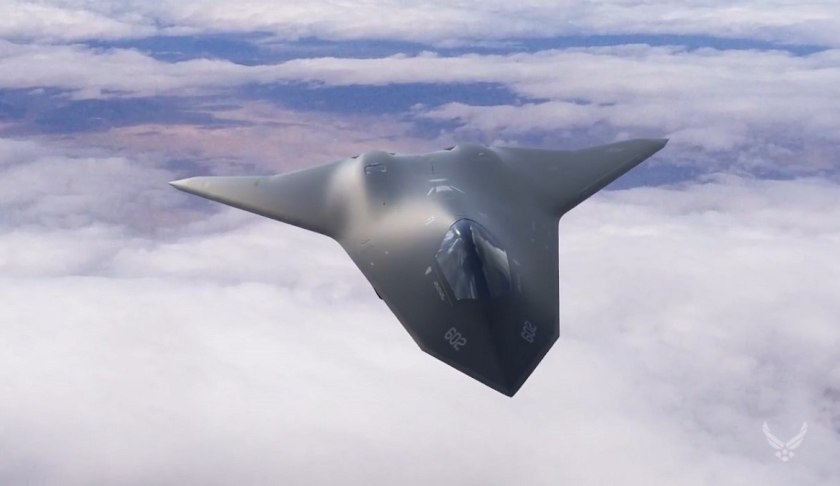The US is looking beyond the fifth-generation F-35 with plans already underway for the sixth-generation 'Penetrating Counter Air' concept, which will be operated by the US Air Force and Navy and, potentially, allies like Australia.
With the growing success of Russian and Chinese fifth-generation fighter aircraft like the Su-57, J-20 and JF-31, the US has kicked off a suite of development programs to replace the ageing F-15 Eagle and fifth-generation F-22 Raptor air frames.
This Penetrating Counter Air (PCA) concept will seek to complement the US Air Force F-35 and the US Navy's F/A-18E/F Super Hornet fleets, serving niche roles including air dominance, air supremacy, fleet air defence, air interdiction and precision strike.
Stemming from the the US Air Force 'Air Superiority 2030' study in 2016, which proposed that the US Air Force would require a 'Next Generation Tactical Aircraft' (Next Gen TACAIR) air superiority/dominance fight jet to enter service in the 2030s.
"The future system will have to counter adversaries equipped with next generation advanced electronic attack, sophisticated integrated air defence systems (IADS), passive detection, integrated self-protection, directed energy weapons, and cyber attack capabilities. It must be able to operate in the anti-access/area-denial (A2AD) environment that will exist in the 2030-2050 time frame," the US Air Force solicitation states.
The US Navy is also looking to capitalise on the the program to develop a next-generation fighter aircraft, building on the initial Navy plan to replace the Super Hornet fleet as announced in 2012, particularly when it comes to service interoperability and sensor fusion to enable enhanced target designation, intelligence, surveillance and reconnaissance data communication with their Air Force counterparts.
However, the Navy requirements do differ from the requirements of the Air Force, particularly with a focus on increased range and speed over the existing Super Hornet platforms to serve in A2AD environments, especially in the western Pacific to improve the survivability of the US Navy's aircraft carriers, which are increasingly becoming targets for advanced Chinese anti-ship cruise and ballistic missile systems.
These capability differences mean that the Pentagon, Air Force and Navy would avoid the joint development program model established by the F-35 Joint Strike Fighter.
Despite this, there is a focus on ensuring that both branches would procure common systems and subsystems to be integrated with the next-generation fighter aircraft.
This early stage of solicitation has seen a number of aerospace companies, including Lockheed Martin, Boeing and Northrop Grumman, present preliminary designs for consideration, with features including:
- Low observable, flying wing shaped air frames;
- Both twin and single engine variants;
- High precision, high capability directed energy weapons;
- Large, traditional weapons (air-to-air, air-to-ground) payloads;
- Command and control capabilities to support 'swarm' drone operations;
- Advanced sensor suites, combining traditional ISR and sensor fusion;
- Optionally manned/unmanned pilot configurations;
- Electronic warfare capabilities; and
- The potential for artificial intelligence to support pilot decision making.
The US is not the only nation beginning development of such platforms, as both the UK and a joint French-German team have begun developing their own sixth-generation air superiority combat fighters.
BAE Systems announced the Tempest in July 2018. The Tempest program will incorporate industrial cooperation and collaboration between some of the largest and most advanced aerospace and defence companies in the world to deliver an unrivalled air combat capability for the RAF, including:
- BAE Systems – advanced combat air systems and integration;
- Rolls-Royce – advanced power and propulsion systems;
- Leonardo – advanced sensors, electronics and avionics; and
- MBDA – advanced weapons systems.
It is anticipated that the UK, in conjunction with its industry partners, will deliver the Tempest next-generation air combat capability by 2035 to operate in conjunction with the RAF F-35s and the later tranche of Eurofighter Typhoons, which they will eventually replace.
Meanwhile, the joint French-German Airbus Defence Future Combat Air System (FCAS) will see a twin-engine, twin tail, dual pilot aircraft to be operational between 2030 and 2040.
The European design will also include a focus on incorporating a command and control for 'swarm' drone operations and will, like the UK Tempest, support the Eurofighter Typhoons in operation with the German Air Force, Rafale in operation with the French Air Force and replacing the Panavia Tornados in the strike role.
For Australia, the future operating environment to the nation's immediate north will necessitate investment in a highly capable, long-range, air dominance fighter aircraft to compliment the F-35 Joint Strike Fighters and replacing the ageing F/A-18 E/F Super Hornets, by the mid 2030s.
Australia's industrial capability and value adding capacity as developed throughout the F-35 program places Australia in an ideal position to integrate and participate in the development of any number of sixth-generation fighter designs to ensure continued air combat capability and interoperability with key regional and global allies in increasingly contested environments, beyond 2030.









